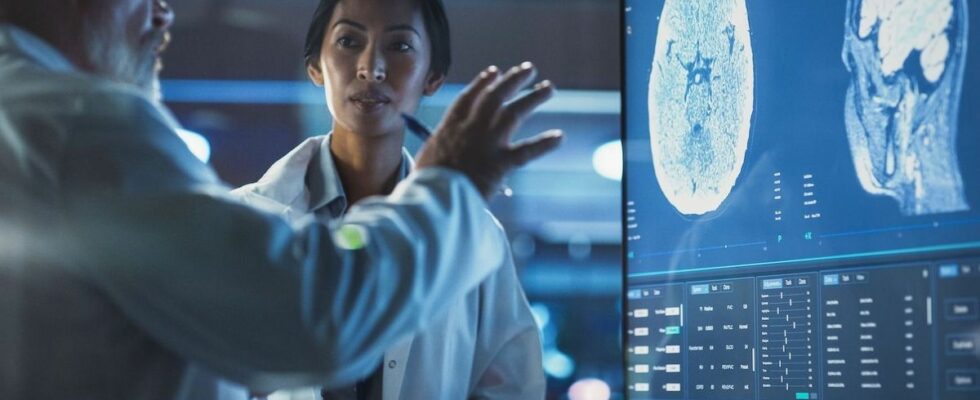Published on
updated on
Reading 2 min.
Using a new technique combining imaging and artificial intelligence, an American team has developed a system capable of detecting autism with an accuracy of 89 to 95%. Results that could revolutionize the diagnosis and management of this neurological disorder.
Autism is currently diagnosed based on behavioral symptoms, and due to a lack of training and expert centers, some children are diagnosed late. In France, the wait before obtaining diagnostic assessments in expert centers is approximately two years. Furthermore, we also know that this neurological disorder has a significant genetic basis, which has led researchers to work on a new approach.
TBM: a very promising image analysis technique
While she was a doctoral student, Shinjini Kundu, now a physician at Johns Hopkins Hospital, helped develop a generative computer modeling technique called transport-based morphometrics (TBM), which is central to this study’s approach.
This mathematical modeling technique differs from other machine learning-based image analysis models because the mathematical models are based on the movement of molecules such as proteins, nutrients, and gases in and out of cells and tissues. “Morphometry” refers to the measurement and quantification of the biological shapes created by these processes.
English speakers can read about his work, initially based on early detection of osteoarthritis based on imaging, in his 7-year-old Ted-X talk.
Using this new mathematical modeling technique, their system reveals patterns of brain structure that predict variations in certain regions of an individual’s genetic code – a phenomenon called “copy number variations” (CNVs), in which segments of the code are deleted or duplicated. These variations are linked to autism.
Autism detection accuracy of 89 to 95%!
In this study, the system analyzed information associated with autism-related CNV variations compared to other “normal” genetic variations that do not cause disease or neurological disorders.
To “feed” their model, the researchers used data from participants in the Simons Variation in Individuals Project, a group of subjects with a genetic variation linked to autism. The control group was recruited from other clinical settings and matched on age, sex and nonverbal IQ, while excluding those with neurological disorders or associated family history.
Result: This update of the “gene-brain-behavior” link made it possible to detect autism with an accuracy of 89 to 95%.
Towards early detection and new treatments?
Beyond the possibility of detecting autism more quickly and therefore implementing early treatment, this technique could also have therapeutic implications.We hope that the results, the ability to identify localized changes in brain morphology related to copy number variations, could indicate brain regions and possibly mechanisms that can be exploited for therapies.“, Rohde said.
Be careful not to go too fast, however, this study is based on child and adult patients, it will be necessary to confirm that in a larger essentially pediatric population, the results are the same. In addition, even if these “gene-brain-behavior” relationships seem to constitute a promising research axis, they will have to be confirmed on animal models.
